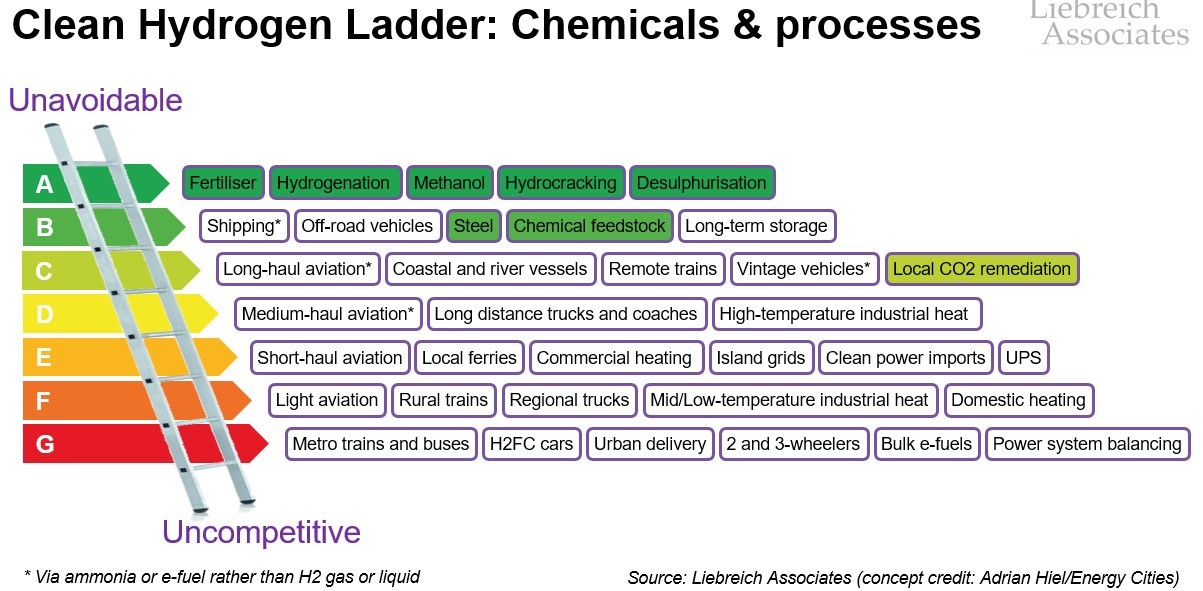IFT: The Secret of Eternal Growth
To read the online article click here
It is an article of faith for the anti-capitalist, anti-trade left that endless economic growth is impossible on a finite planet. The sooner it can be brought to a halt, or even reversed, the better. This month’s IPCC report into the dire consequences of a 1.5°C increase in global temperatures will have given it encouragement. However, the award of the Nobel Prize in Economics to Paul Romer and William Nordhaus (i), in the same week, can only be interpreted as a huge slap in the face for the champions of “degrowth”.
Ever since Thomas Malthus’s 1798 Essay on the Principles of Population (ii) there have been strident voices predicting the catastrophic end of economic growth. The modern case against growth finds its root in the work of Nicholas Georgescu-Roegen, whose 1971 book, The Entropy Law and the Economic Process (iii), is the Old Testament of the degrowth industry. The Second Law of Thermodynamics states that entropy can only ever increase in an isolated system; Georgescu-Roegen used it to argue that “increasing entropy in the economy sets the limit on the scale it can achieve and maintain.”
The earth, however, is not an isolated system. It may be nearly closed, exchanging limited matter across the planetary boundary, but it is far from isolated, as it receives a huge daily flux of energy from the sun and radiates almost as much away to space. In his book, Georgescu-Roegen even acknowledged the existence of huge solar energy fluxes, but that didn’t stop him from basing his seminal work on a scientific error. Later in his career, after ruefully acknowledging his mistake, he invented a Fourth Law of Thermodynamics, claiming that “material entropy” would forever prevent materials from being perfectly recycled. Pure fake science.
Around the same time as Georgescu-Roegen was making up thermodynamic laws, a group of concerned environmentalists calling themselves the Club of Rome invited one of the doyens of the new field of computer modelling, Jay Forrester, to create a simulation of the world economy and its interaction with the environment. In 1972 his marvellous black box produced another best-seller, Limits to Growth (iv), which purported to prove that almost every combination of economic parameters ended up not just with growth slowing, but with an overshoot and collapse. This finding, so congenial to the model’s commissioners, stemmed entirely from errors in its structure, as pointed out by a then fresh-faced young economics professor at Yale, William Nordhaus.
A third foundational work in the degrowth canon is Steady State Economics (v) by Herman Daly, later Senior Economist in the Environment Department of the World Bank. In it he explains that “the economy is an open subsystem of a finite and nongrowing ecosystem. Any subsystem of a finite nongrowing system must itself at some point also become nongrowing.” It’s a repeat of Georgescu-Roegen’s error. Daly must have known it too, since he noted that six days’ worth of radiation from the sun contained more useful energy (or exergy, to give it its correct name) than that embodied in all the fossil fuel reserves known at the time.
The point here is not that solar power is the key to endless growth, though it could well be – nuclear fission and fusion are other strong contenders. The point is that when you scratch the surface of any of the seminal tracts of the degrowth movement, you find they are based on the same fake science, right through to the present day.
Jeremy Rifkin’s 1980 Entropy: a New World View (vi) states that “here on earth material entropy is continually increasing and must ultimately reach a maximum”. In 2009, Professor Tim Jackson, the favourite anti-capitalist of the TED generation, published Prosperity Without Growth (vii). In it he pays homage to Daly’s “pioneering case for a ‘steady state economy’” and cheerfully recommends it to students hungering for alternative wisdom – either not understanding or not caring that it is based on a fallacy.
This matters because, for all that the neo-liberal world economy has delivered extraordinary improvements in living standards – in life span, levels of education, infant survival, maternal health, poverty reduction, leisure, and so on (viii) – it is currently failing to address severe, systemic environmental challenges, first and foremost among them climate change. Unless the free-trade, pro-growth, pro-trade right offers a coherent plan, it is ceding the argument to the degrowth, anti-capitalist, anti-trade left.
Climate change is real, serious, and urgent. That recent IPCC 1.5°C report is based on rigorous research. Of course climate change is being co-opted by the “Academic Grievance Studies” brigade (ix), but that doesn’t make the underlying physical science less real. As the world continues to burn through its remaining carbon budget, as temperatures continue to rise, as the ‘signal’ of climate damage becomes clearer against the background ‘noise’ of weather, the demand for dramatic action will only increase.
Limiting the impact of climate change will require the application of technology, both new and yet-to-be-developed, on a heroic scale. Destroying the ability of the world economy to deliver these solutions is the very opposite of what we should be doing. And that is where Nordhaus and Romer come in.
Romer’s great contribution was to identify the contribution of knowledge to economic growth. Before his Endogenous Growth Theory, no one could explain differences in growth rates of as much as 10 percent between countries at a similar stage of development. Romer’s work is the perfect riposte to those who think that economic growth is the same thing as ever-increasing physical material use and pollution; it is also the perfect riposte to those who believe that extractive industries can ever deliver long-term wealth and those who believe the same of agricultural subsidies and import tariffs.
Nordhaus, for his part, was the creator of the first Integrated Assessment Models, bringing together the physics of climate change, its economic impact, and the functioning of the economy. He was also the first person to suggest that attaching a cost to emissions – low at first but rising – would squeeze greenhouse gases out of the economy. Nordhaus is no climate fundamentalist, famously diverging from the view propounded in the Stern Review, that the world needs super-high carbon taxes immediately. Nordhaus accepted that environmental challenges and climate change will act as a drag on the economy but, unlike others before him, he quantified the drag and showed that it is highly unlikely to reverse economic growth.
Nordhaus and Romer are not the only Nobel Prize-winners whose work suggests that an open, liberal, trade-friendly economy – though one pricing in externalities – will do a better job of addressing climate change and other environmental problems than stalling or reversing economic growth.
Simon Kuznets, who won the 1971 Nobel Prize for Economics (x), described how a variable can get worse in the early phases of a country’s development, and then improve as growth continues. He focused mainly on inequality, but the Environmental Kuznets Curves has been shown to govern most forms of local pollution.
Ilya Prigogine won the 1977 Nobel Prize in Chemistry for his research into non-equilibrium “dissipative” structures – how a flow of energy across closed system can drive the creation of “order out of chaos” (xi). This is a real scientific expert on entropy proving that the economy can grow for as long as there is still a sun in the sky (which would give us about another five billion years).
Elinor Ostrom won the 2009 Nobel Prize in Economics for her work on the management of shared resources (xii). When the anti-trade left is not misusing thermodynamics to demand an end to economic growth, it is proclaiming that every use of natural resources is a Tragedy of the Commons and demanding state intervention. Ostrom documented hundreds of cases of long-term exploitation of common assets, only a minority of which ended up in over-exploitation. It turns out that with effective governance and social structures, groups of individuals are quite capable of managing shared resources without relying on top-down government edicts.
Asked by the World Bank for her views on climate change in 2009, Ostrom proposed a “polycentric” solution(xiii) – pretty much what we see emerging from the Paris Agreement and its subsequent adoption by multiple levels of society (even if rejected by the current US administrations).
It should be noted that rejecting the argument against growth is not the same as believing GDP is the only or even the best metric for human well-being. GDP is a neutral measure of economic activity. Governments love GDP because what you can measure you can tax; journalists love GDP, because it’s a simple, headline-ready figure, perfect for building up politicians and knocking them down (and most journalists are as illiterate about trade, economics, and finance as they are about science).
GDP mixes the good with the bad – the student buying an engineering text-book with the oil company cleaning up a spill; the building of roads with the building of defences against rising seas. Running an economy fixated on GDP is like running a company fixated on quarterly revenues. The left sees salvation in “Happiness Economics” (xiv), advocating the abandonment of hard metrics in favour of surveys into people’s feelings (and presumably government policies aimed at manipulating them). A better response is to focus on measures of National Wealth – which include natural, human and man-made capital – as proposed by Oxford’s Cameron Hepburn and Kirk Hamilton (xv), and others.
Another rising star of the economics firmament is Mariana Mazzucato. In The Entrepreneurial State (xvi), she identified the vital role of public funding in the creation of knowledge (where she goes wrong is to suggest taxing the use of that government-generated knowledge, which would go exactly against Romer’s insights). Mazzucato argues that since governments are de facto responsible for the direction of technological development, they should promote technologies which protect rather than destroy the climate. Other policy interventions – taxation, education, infrastructure, building codes, and so on – should then be appropriately aligned.
Which brings us to trade. The positive contribution of trade to human wellbeing has been understood since the time of David Ricardo (xvii). One of the main drivers of the astonishing reduction in the cost of solar power over the last five years has been its global supply chain: US refined silicon, Chinese cell manufacturing, German power inverters, London-based financial services. If you value technologies which can reduce emissions, the very last thing you should be doing is to stall the world economy. Nor should we be doing what President Trump and the EU are doing, and placing import tariffs on the very technologies that will help avert the worst of climate change and that represent the future of the employing economy.
In 2009, I came up with the idea of a Sustainable Energy Free Trade Area, within which willing countries would waive all tariffs and non-tariff barriers to trade in clean energy and transportation technologies and services (xviii). By 2014, the initiative had morphed into a WTO negotiation over an Environmental Goods Agreement, which was on track to be signed by 16 countries accounting for 86% of global environmental trade, until it was torpedoed by China in late 2016.
Greenhouse gas emissions are no respecters of borders, so those inclined towards action on climate will always worry about international free-riders. The favoured solution of the left is of course global government. Despite the failure of the approach at the Copenhagen climate talks in 2009, we still see mainstream academics demanding global carbon taxes or “collective action [entailing] stewardship of the entire Earth System—biosphere, climate, and societies (xix),” a chilling prospect. An alternative approach, which would preserve the power of global trade to improve lives and could be fiscally neutral, would be for those countries taking climate action to impose Border Carbon Adjustment on imports from those that do not (xx). The fun part would be watching lawyers define what constitutes climate action: does talk count, or only results?
The bottom line here is that the world’s most feted scientists and economists have shown that economic growth is consistent with environmental protection and the mitigation of climate change.
Dramatic progress in low-carbon technologies over the past decade – energy efficiency, wind, solar, batteries, electric vehicles – suggest the vast bulk of emissions from energy and transport can be eliminated over the coming few decades at modest or negative cost, even as modern energy services are cheaply brought to the last billion people on the planet. No country has proven the “decoupling” of the economy from its carbon footprint better than the UK. Since 1990, the country’s real GDP per capita has grown by two thirds, while its emissions have dropped by a third, and air and water quality have both improved enormously. Don’t believe anyone who says this is just an artefact of the offshoring of industry: over the same period UK manufacturing’s Gross Value Added grew in real terms.
In the longer term, there is nothing in physics to stop the economy from growing forever. It’s not just that more and more of the economy will consist of services, though that is certainly the case, and more and more of them will be digitally provided by computer ‘bots’. The physical sectors of the economy will trend towards becoming entirely circular: material efficiency and recycling will improve indefinitely; the extraction of materials and production of pollution will first peak and then asymptote to zero. We will use unlimited knowledge and clean exergy from solar or nuclear power to drive endless improvements in human wellbeing and flourishing.
The open question – for each country, or for groups of countries working together, to decide – is how much of their natural ecosystems they want to see preserved as this process runs its course. I hope they choose wisely, because,while the cost of preservation will be modest, the wrong decisions will be irreversible.
We should approach the task with optimism. Not as Paul Romer explains, complacent optimism, like a child waiting for presents, but with conditional optimism, like a child who is planning to build a treehouse (xxi) – because the future is in our hands, the trade-offs are ours to make. And because, as Ronald Reagan (displaying a more thorough understanding of thermodynamics and economics than the entire degrowth crowd) once said: “There are no such things as limits to growth, because there are no limits on the human capacity for intelligence, imagination, and wonder (xxii).”
Michael Liebreich is Chairman and CEO of Liebreich Associates. He is Founder and Senior Contributor to Bloomberg New Energy Finance, Visiting Professor at Imperial College’s Energy Future Lab, and former board member of Transport for London.
(i)
Announcement of the Sveriges Riksbanks prize in Economic Sciences in Memory of
Alfred Nobel, Royal Swedish Academy of Sciences, 2018
https://www.nobelprize.org/uploads/2018/10/popular-economicsciencesprize2018.pdf
(ii)
An Essay on the Principle of Population, Thomas Malthus, 1798 https://en.wikipedia.org/wiki/An_Essay_on_the_Principle_of_Population
(iii)
The Entropy Law and the Economic Process, Nicholas Georgescu-Roegen, 1971
http://www.hup.harvard.edu/catalog.php?isbn=9780674281653
(iv)
The Limits to Growth, Club of Rome/Potomac Associates, 1972
https://www.clubofrome.org/report/the-limits-to-growth/
(v)
Steady State Economics, Herman Daly, 1977
https://islandpress.org/books/steady-state-economics
(vi)
Entropy, A New World View, Jeremy Rifkin and Ted Howard, 1980
https://en.wikipedia.org/wiki/Entropy:_A_New_World_View
(vii)
Prosperity Without Growth, Tim Jackson, 2009
(viii)
Our World in Data, Max Roser, various dates
https://ourworldindata.org/
(ix)
Academic Grievance Studies and the Corruption of Scholarship, Helen Pluckrose,
James Lindsay and Peter Boghossian, 2018
https://areomagazine.com/2018/10/02/academic-grievance-studies-and-the-corruption-of-scholarship/
(x)
Nobel Prize Lecture – Modern Economic Growth: Findings and Reflections, Simon
Kuznets, 1971
https://www.nobelprize.org/prizes/economic-sciences/1971/kuznets/lecture/
(xi)
Nobel Prize Lecture – Time, Structure and Fluctuations, Ilya Prigogine, 1977
https://www.nobelprize.org/prizes/chemistry/1977/prigogine/lecture/
(xii)
Nobel Prize Lecture – Beyond Markets and Nations, Elinor Ostrom, 2009.
https://www.nobelprize.org/mediaplayer/?id=1223
(xiii)
A Polycentric Approach for Coping With Climate Change, Elinor Ostrom, 2009
https://elibrary.worldbank.org/doi/abs/10.1596/1813-9450-5095
(xiv)
Happiness Economics, David G Blanchflower, 2008
https://www.nber.org/reporter/2008number2/blanchflower.html
(xv)
National Wealth – What is Missing, Why it Matters, Cameron Hepburn, Kirk
Hamilton et al.
https://global.oup.com/academic/product/national-wealth-9780198803720?cc=sc&lang=en&
(xvi)
The Entrepreneurial State, Mariana Mazzucato, 2011
https://marianamazzucato.com/entrepreneurial-state/
(xvii)
An Essay on the Influence of a low Price of Corn on the Profits of Stock, David
Ricardo,
http://la.utexas.edu/users/hcleaver/368/368RicardoCornLawstable.pdf
(xviii)
The Law and Economics of a Sustainable Energy Trade Agreement, Gary C.
Hufbauer, Ricardo Meléndez-Ortiz and Richard Samans, 2016
https://tinyurl.com/ybhyxed3
(xix)
Trajectories
of the Earth System in the Anthropocene, Steffen et al, 2018
http://www.pnas.org/content/early/2018/07/31/1810141115
(xx)
The Role of Border Carbon Adjustments in a US Carbon Tax, Warwick McKibbin,
Adele Morris, Peter Wilcoxen and Weifeng Liu, 2018
https://www.worldscientific.com/doi/abs/10.1142/S2010007818400110
(xxi)
Why the newest Nobel laureate is optimistic about beating climate change, Quartz,
2018
https://qz.com/1417222/why-new-nobel-laureate-paul-romer-is-optimistic-about-beating-climate-change/
(xxii)
Remarks at Convocation Ceremonies at the University of South Carolina in
Columbia, Ronald Reagan, 1983
http://www.presidency.ucsb.edu/ws/index.php?pid=40486
Terms of use: photos and other media may be used exclusively for the purpose of publicising an upcoming or past event involving Michael Liebreich, or to illustrate an article written by him. Their use must be accompanied by a clear indication of copyright in the following form:
© Liebreich Associates/name of photographer. Photos or other media downloaded in this way remain the property of Liebreich Associates Ltd. Any infringement of these terms of use may result in legal action by Liebreich Associates Ltd or by the respective photographer or rights holder.






